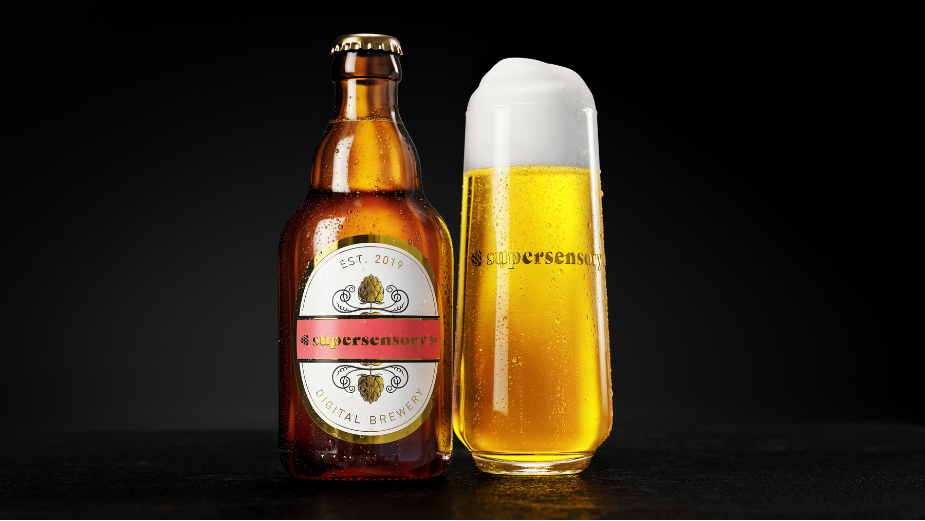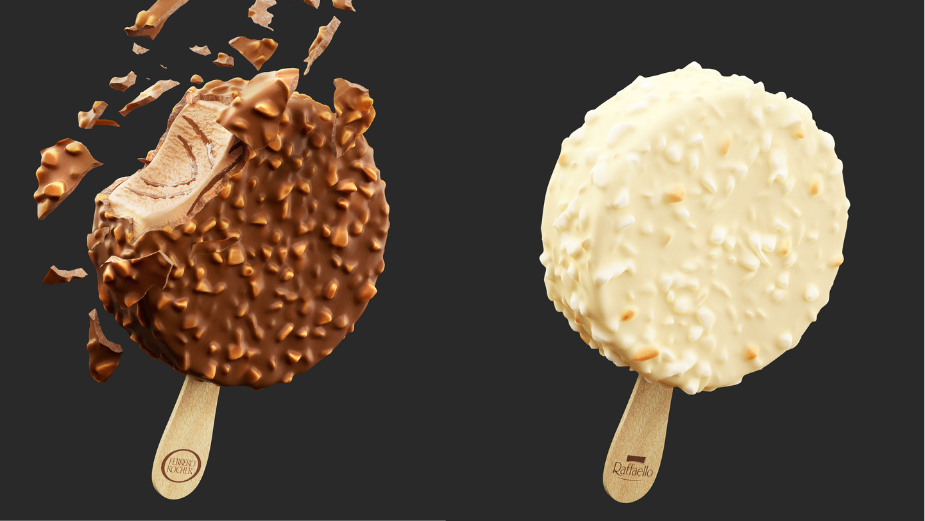
supersensory’s Mouth-Wateringly Good Digital Tabletop

“supersensory is not a post company, we just happen to use the same software. It’s really a digital tabletop studio,” says the company’s founder and chief creative officer Linus Ewers.
When it comes to close-up shots of products, tabletop production has been a staple for many years. This style of filmmaking refers to when an object is captured on top of a flat surface in detail and then these assets are used to create a larger campaign. Think of close-up pictures of your favourite chocolates, or food on a Christmas table from supermarkets during the festive season. But this form of filmmaking has evolved.
It was six months prior to the covid pandemic that supersensory’s founder and CCO Linus realised there was a gap in the market to fill. The tabletop process could be elevated digitally, products could be scanned and rendered online, heightening details, creating otherwise impossible effects and developing a library of options for brands to choose from. Shots could include liquids, fruits, and different flavours and clients could see, first hand, what was being created – no pre-production prep or limitations with lighting, products melting or things going wrong on the day.
And so, supersensory was born.
To hear more about how the digital tabletop studio came to life, some of the sustainable benefits that this method champions and to revel in the work, LBB’s Nisna Mahtani speaks to Linus and supersensory’s director of business development & client services, Cornelia Sanders.
LBB> Tell us a little bit about your background and how you first got into the industry.
Linus> I started out at the Filmakademie Baden Württemberg, which had the first film department in Germany in the mid-’90s. They also had an advertising directorial class, so you could study feature documentaries, advertising, or even photography. Back then, they had what they called the ‘Highlights’ – before YouTube existed – where the industry would come in for a day and see the advertising reel of students at the university.
I ended up getting into advertising after that and in 2005, I got nominated at Cannes, started to shoot commercials and so, here I am. I’m part of the Director’s Guild in America so I made the step over in 2007/8 and started to work and also produce out there. I ended up setting up a post production company in Germany and being the only client, which made me transform it into something more content related. That's when Cornelia Sanders came in, with her agency background. She taught me the difference between a story and an idea.
LBB> What was the first project that took you down the current path?
Linus> A few years ago during the Euro Cup, a client asked us to do a 3D water, splashy commercial for a mineral water brand. At that point, I thought, why not do a full-on digital tabletop studio – while most food and beverage shot were still produced life action. In the digital realm, we would be way more flexible and could focus on creative rather than practice experiments bound by physical limitations

LBB> Where did the ‘supersensory’ name come from?
Cornelia> When we were developing the name, we wanted to create a euphoric experience for people watching. We wanted people to drool over the visuals, which is how the name came to light. It’s necessary to make things look realistic and natural, and of course, occasionally beautify things, but there is a fine line to it.
With the opportunity we have to show clients the work during the process, they can see why we advise against certain effects, because we understand the physics behind the product. The aim is for the consumer to be drooling over the work, so we want to make sure that we dial it back to achieve that mouth-watering effect.
LBB> At the heart of things, what does supersensory do and what was the inspiration behind it?
Linus> supersensory is not a post company, we just happen to use the same software. Post or visual effects is about stunning effects and pushing technical boundaries. It’s like 1994 Jurassic Park or Moby Dick in the ‘60s. The downside: visual effects tend to age over time.
supersensory works differently. Our goal is photorealism and a certain timelessness. We only do what is really possible and won’t age visually within a few years or up until some new tech would emerge. To achieve that, our food stylist and special effects person has digitised her craft. For instance, if we develop cookies or cakes, we would craft a product to perfection and then using our high-end scanner, we’d digitise it and move it into the digital world. There, in the digital realm, we fine tune, stage, animate and light them to perfection.
That’s what we call the 'pure digital tenet'.

LBB> Is there a particular piece of work that you’re able to share the behind the scenes images and process for?
Linus> The baking work for Milka with the brownies was a great process. What’s good to remember is that this is all digital and yet it looks so real, it’s the flagship technology that creates the effect. Every client and agency knows that liquids, ice cream, and macro baking work are very tricky elements to achieve.
LBB> What are some of the differences of working in this way as opposed to traditional tabletop and also, what are some of the technical challenges and considerations which play a part?
Linus> We are more cost effective than a traditional studio, not by a huge scale, but the benefit is that the client has full control. With traditional tabletop food production, it’s a physical experiment where you’re putting things together and hoping they fall into the right place. With us, we can work in 10 thousandths of a second and the exact movements, which come down to the constant stream of process and development. We sell digitisation and the process.
There’s also a difference in the way you work. With classical production, there is a long process – days beforehand prepping, booklets, mood boards and so on. We think that everyone should change the pre-production process because it will benefit people’s mental and physical health. The way we work means that we make weekly work in progress reviews with all stakeholders. Those are always based on visuals and allow us to align and guide everyone through the decision-making process. We can readjust things and are not be bound to one specific idea – it creates both trust and convenience for us and the clients.
LBB> There’s a lot of freedom and versatility that comes from working with products in this digital way. Can you tell us a little bit more about this?
Linus> We did a freestyle piece for a coffee machine, where the client wanted to have a shot that somehow gives the idea of the chocolate aroma that is extracted from coffee beans and also the hot water. If you look at it, it was impossible to make in in the classical world – we simulated the water and made it interact with 3D scanned pieces of chocolate which our food stylist tweaked digitally.
A lot of our clients aren’t food-related but they use us because they want to achieve a certain look and feel which isn’t otherwise possible.
Even if a client doesn’t use the assets for a few years, we just update things to the latest software – two years in our world is like the Wild West – but then we can keep going. It’s easy for us to alter the flavours of a product, add extra toppings and so it’s super sustainable in terms of the monetary costs.
LBB> And from a sustainability standpoint, what are some of the benefits?
Linus> In terms of the environmental impact, one of our team members is is a German-certified green consultant. At the moment, we can say that 5x - 9x less carbon dioxide is emitted in our process versus traditional tabletop. This is a topic which is really important, especially since I’ve seen the immense amounts of waste, non-recyclable waste, and even the toxic products which are generated during the classical production process.
There was also the fact that the emissions of one transportation vehicle on a classic shoot - bringing agency and client from their hotel in Santa Monica to a stage in West Hollywood only one way - is higher than the collective emissions of all render work on one of our medium to large digital products. We’re also on the pathway to being 100% green, we have only one vendor which doesn’t provide green or renewable electricity, but that’s going to change soon.
When it comes to the reusability of our products, we can use them an endless amount of times – recycle, reuse and update elements of the visuals. For instance, for one of our clients, we’ve used the same signature hazelnuts countless times. This saves money and time.












